Pilot Briefing: News
‘Life-changer’
Cirrus Aircraft’s Vision Jet certified
By Thomas B. Haines
Cirrus Aircraftestablished a new era in general aviation with the announcement that it has received FAA type certification of its single-engine turbofan, the Vision Jet. The Model SF50 becomes the first modern single-engine jet certified in the civilian world and gives the 6,500 piston-powered Cirrus customers a progression to flying a pressurized turbofan.

The Duluth, Minnesota-based company began talking about building a jet a decade ago and in 2007 showed its first concept: a seven-seat, single-engine jet with a V-tail. After the 2008 recession, however, the project, like many aircraft development programs, languished. In 2012 Cirrus reengaged with the Vision Jet project, leading to a progression of first flights for the prototype and production models.
The major subassemblies, all made from carbon fiber, are manufactured at the company’s Grand Forks, North Dakota, plant. Final assembly is done in Duluth. First delivery of the jet was scheduled for December in Duluth. But ultimately all customer services, including training and delivery, will be moved to the company’s new Vision Center under construction in Knoxville, Tennessee.
First customer for the SF50 is Joe Whisenhunt, a Conway, Arkansas, real estate developer who has owned nine piston-powered Cirrus aircraft since he began flying eight years ago. He has accumulated about 500 hours since then. He’s flown one of the development airplanes and is excited to transition to the jet. The company plans to be delivering an airplane a week by the end of the first quarter of 2017, with a further ramp-up later in the year—all aimed at working down a 600-order backlog.
The Vision Jet is certified to 28,000 feet and has a top speed of 300 knots true airspeed. It can fly as far as 1,000 nautical miles. While it will seat seven, Pat Waddick, president of innovation and operations, said the jet seats five comfortably with two small seats available for the aft cabin. The single Williams FJ33-5A engine puts out about 1,800 pounds of thrust and is managed through a dual-channel full-authority digital engine control system.
A variant of the Garmin G3000 cockpit called Cirrus Perspective Touch aims to ease Cirrus piston customers into the jet environment. The switches, for example, are almost all in the same places. However, the jet panel includes extensive synoptic pages for monitoring and managing systems. A set of small touch screens allows the pilot to manage all the navigation and communication systems as presented on the large primary and multifunction displays.
Among the many innovations of the Vision Jet is the inclusion of the Cirrus Airframe Parachute System (CAPS) that is standard on the company’s piston airplanes. The SF50 is the first jet to include a parachute system. The jet CAPS deploys from the nose, whereas the piston version deploys from aft of the cabin. Waddick said the parachute project was so difficult the company almost abandoned adding it to the airframe. However, it is a part of the certified airplane.
Company co-founder and CEO Dale Klapmeier doesn’t use many numbers when describing the project. “We’re changing the way customers live their lives,” he said. “Today we have the type certificate for the Vision Jet, 10 years in the making. It is a plane that is going to change the industry—change how we think about travel.” Waddick reiterated that notion, saying the Vision Jet “will change your life forever.”
SPEC SHEET
Cirrus Vision Jet SF50
$1.96 million
Powerplant | Williams FJ33-5A engine
Length | 30 ft 8 in
Height | 10 ft 11 in
Wingspan | 38 ft 8 in
Cabin width | 5 ft 1 in
Cabin height | 4 ft 1 in
Max takeoff weight | 6,000 lb
Takeoff over 50-ft obstacle (sea level) | 3,192 ft
Max operating altitude | FL280
Max cruise speed | 300 KTAS
For more information http://cirrusaircraft.com/aircraft/vision-jet
Email [email protected]
DeLand debuts
New Light Sport show competes with Sebring
The first DeLand Sport Aviation Showcase in Florida attracted decent crowds November 3 through 5, and accomplished what an aviation trade show is supposed to do: sell airplanes. A few aircraft sales were made and solid prospects contacted, according to organizer Jana Filip, former director of the U.S. Sport Aviation Show in Sebring, Florida.
Mass parachute jumps, formation flyovers, and the constant hum of demonstration flights for potential customers provided entertainment at DeLand. Three seminar tents hosted technical symposiums The final total of attendees for the three days was 3,822.
The show also brought publicity and legitimacy to new players, at least in the United States, such as JMB Aircraft of the Czech Republic. JMB manufactures a two-place aircraft that will go 145 knots true airspeed in the Experimental category, or with a different set of wings will slow to 120 knots to fit into Light Sport category limitations. Also seen at the show were powered parachutes, trikes, and gyrocopters from AutoGyro of Germany.
The next DeLand Sport Aviation Showcase is scheduled November 2 through 4. —Alton K. Marsh
A Trump White House
What the president-elect and a new Congress mean for GA
By Joe Kildea
Following months of debates, rallies, fact checks, and polls, election results are in, and AOPA will begin to work with a new White House and Congress on issues that matter to pilots.
Jim Coon, AOPA senior vice president of government affairs and advocacy, noted that president-elect Donald Trump will be a friend to general aviation considering he is an aircraft owner and campaigned on rebuilding America’s infrastructure, including airports.
Trump’s campaign website says the president-elect will “implement a bold, visionary plan for a cost-effective system of roads, bridges, tunnels, airports, railroads, ports and waterways, and pipelines,” and “work with Congress to modernize our airports and air traffic control systems.”
Trump currently owns four aircraft: a Boeing 757-200, a Cessna Citation X, and two Sikorsky S–76B helicopters.
Coon said AOPA will reach out to Trump’s transition team and incoming members of Congress to discuss the value of GA to the economy, and key issues that affect the future of aviation in America.
“AOPA has a number of important issues to address for general aviation, and we look forward to working with the incoming Trump administration and the new Congress,” he said.
Trump is scheduled to take the oath of office on January 20, 2017.
Capitol Hill, along with the White House, will also see some new faces. Two notable losses from the House Transportation and Infrastructure Committee came with Stephanie Murphy’s (D-Fla.) defeat of Rep. John Mica (R-Fla.) and state Sen. Ruben Kihuen’s (D-Nev.) victory over Rep. Cresent Hardy (R-Nev.).
Sen. Kelly Ayotte (R-N.H.), the chair of the Senate Aviation Subcommittee and co-sponsor of the Pilot’s Bill of Rights 2, also lost her New Hampshire Senate race against Gov. Maggie Hassan (D-N.H.).
At least 32 members of the House GA Caucus and one member of the Senate GA Caucus will not return to office.
Email [email protected]
National Aviation Hall of Fame announces 2017 inductees
The National Aviation Hall of Fame announced the names of four individuals to be enshrined in 2017 for contributions dating “from the dawn of the jet age through the manned exploration of space.”
The Dayton, Ohio-based nonprofit dedicated to honoring the nation’s aerospace legends announced the 2017 enshrinements at the National Business Aviation Association’s Business Aviation Convention and Exhibit in Orlando, Florida. The honorees will be inducted in a ceremony at a date to be announced.
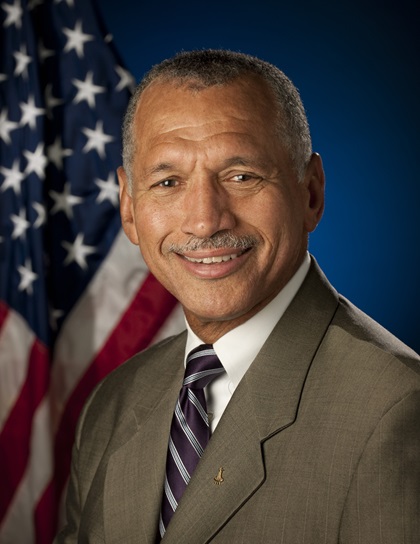 • NASA Administrator Charles Bolden Jr., a four-time veteran of the space shuttle, retired Marine Corps major general, and fighter pilot.
• NASA Administrator Charles Bolden Jr., a four-time veteran of the space shuttle, retired Marine Corps major general, and fighter pilot.
• The late M. Scott Carpenter, the Navy test pilot who became the second American to orbit the Earth as one of the original Mercury 7 astronauts. Carpenter helped design the Apollo lunar module, and developed underwater training for spacewalks.
• Robert J. Gilliland, an Air Force jet fighter and test pilot who was recruited by aeronautical engineer Clarence Leonard “Kelly” Johnson to lead Lockheed’s Skunk Works in the testing of its record-breaking SR–71 aircraft. Gilliland has logged more test-flight hours above Mach 3 than any other pilot.
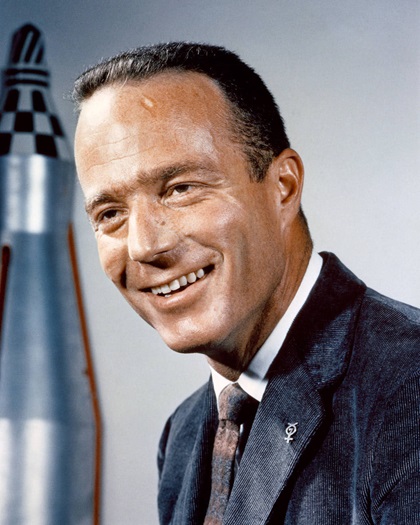 • The late Sir Frank Whittle, the “Founder of the Jet Age,” who built the first practical turbojet engine in 1937. His subsequent engine technology led directly to development of the jet aircraft industry in the United States, to which he emigrated from the United Kingdom in 1976.
• The late Sir Frank Whittle, the “Founder of the Jet Age,” who built the first practical turbojet engine in 1937. His subsequent engine technology led directly to development of the jet aircraft industry in the United States, to which he emigrated from the United Kingdom in 1976.
Each year, the National Aviation Hall of Fame’s Board of Nominations, a voting body made up of more than 140 aviation professionals nationwide, selects a handful of previously nominated air and space pioneers to be recognized for their achievements with enshrinement into the National Aviation Hall of Fame. It has inducted 233 men and women since its founding in 1962, with a mission to honor America’s aerospace legends to inspire future leaders.
The fifty-fifth annual National Aviation Hall of Fame Enshrinement Dinner and Ceremony will be open to the public. Reservations will be available by advance purchase.
AOPA News
Hall of Fame honors AOPA
Making a difference in aviation and aerospace
By Thomas B. Haines
AOPA was among an esteemed class of aviation and aerospace pioneers inducted into the International Air & Space Hall of Fame at the San Diego Air & Space Museum in November 2016. The black-tie affair brought together a diverse group of entities that share the common thread of making a difference in aviation and aerospace.
Joining the 77-year-old association in the class of 2016 were Apollo 15 astronaut Al Worden; The Boeing Company, celebrating its one hundredth anniversary in 2016; Coast Guard Aviation, also celebrating 100 years; aviation and space pioneer Dale Myers; non-scheduled airlines that emerged from World War II aviation; Orbis International Flying Eye Hospital; and the founders and organizers of the Planes of Fame Air Museum in Chino, California.
James G. Kidrick, San Diego Air & Space Museum president and CEO, said the honorees are selected for their qualitative achievements and historic contributions to aviation, space, and aerospace innovation or expanding the public’s aviation and space awareness to the world.
In accepting the nomination for AOPA, President and CEO Mark Baker said he was honored to represent the hundreds of thousands of AOPA members who help the organization succeed in achieving the founders’ vision of protecting the freedom to fly. Formed in 1939 in the dark days leading up to World War II, AOPA for decades has fought to protect the extraordinary threats that could mean an end to personal aviation. Today the organization also is looking forward; its recently announced You Can Fly program is designed to help bring pilots back to aviation and create a foundation for future pilots through the introduction of aviation programs in high schools, improving the flight training experience, and establishing and supporting flying clubs to help lower the cost of aviation for many pilots.
Email [email protected]
Headlines that affect you
Recent news from the aviation world
84 members of Congress urge swift action on medical reform
A bipartisan group of senators and representatives signed letters to FAA Administrator Michael Huerta, pressing the agency head to ensure third class medical reform is implemented on time and according to the provisions signed into law in July. —AOPA Online
GAMA board of directors elects new officers
The board of directors of GAMA elected Simon Caldecott, president and CEO of Piper Aircraft, as its chairman for 2017. In addition, Phil Straub, managing director of aviation and vice president of Garmin International, was elected as vice chairman. —Aero-News Network
January 18, 1911
Notable People in Aviation History
Eugene B. Ely made the first landing by aircraft on a ship, in a Curtiss biplane. Ely landed on the USS Pennsylvania, the first ship to be equipped with a landing deck and arresting system. Sailors lined the ship to watch his final turn and the betting odds were against him. He approached the ship at 40 knots and cut the engine when he was directly over the end of the platform. A roar of cheers broke out and the ships in San Francisco Bay let go with their sirens and horns. Ely flew with the Curtiss Exhibition Team and was awarded the Aero Club of America’s pilot certificate number 17. He was known for reckless and daring flying. He died when his airplane went out of control during an exhibition in Macon, Georgia. His legacy lives on each time an aircraft takes off or lands on a ship. —National Aviation Hall of Fame
MULTIMEDIA
Greatest stories ever told
‘Legends of Airpower’ DVD series available
By Julie Summers Walker
George McGovern was just 23 when he flew a B–24 over Austria during World War II. He accidentally bombed a farmhouse as he and his crew flew over, a jammed bomb forcing his actions. He saw the family running for their lives as the bombs dropped and the memory haunted him until, some years after his run for president in 1972, he spoke at a memorial ceremony in Austria. As he told the story, a call came in to where McGovern was speaking: A member of the family was on the line and he wanted McGovern to know his family had all survived and thought it had been worth it to defeat Nazi Germany.
It’s stories like this and others from aviation’s famous, infamous, and often-unknown heroes that make up Legends of Airpower, a DVD series now available. Russ Hodge, a former producer for the McLaughlin Report and owner of Three Roads Communications based in Frederick, Maryland, says of the 52 men and women profiled in this four-part series, which first aired on PBS in 2000, “These people were ordinary people who did extraordinary things when called upon by their country.” Now available on Amazon Prime, Legends of Airpower features many personal interviews with such aviation greats as Chuck Yeager, Buzz Aldrin, and James Lovell, accompanied by rare and seldom-seen footage. Hodge says the stories of lesser-known aviation heroes are also compelling—stories from Vietnam-era Navy pilot James Stockdale; World War II flying ace Eddie “Butch” O’Hare; and Charles Bolden, NASA administrator and former astronaut. “These are inspiring personalities,” Hodge says. In fact, the U.S. Air Force Junior ROTC program features these 52 profiles in its educational program.
The four-season set of DVDs, 52 episodes in all, is available for AOPA members at a 50-percent discount. Instead of $300, the price is $150, including shipping and handling.
Contact: www.legendsofairpower.com
Email [email protected]
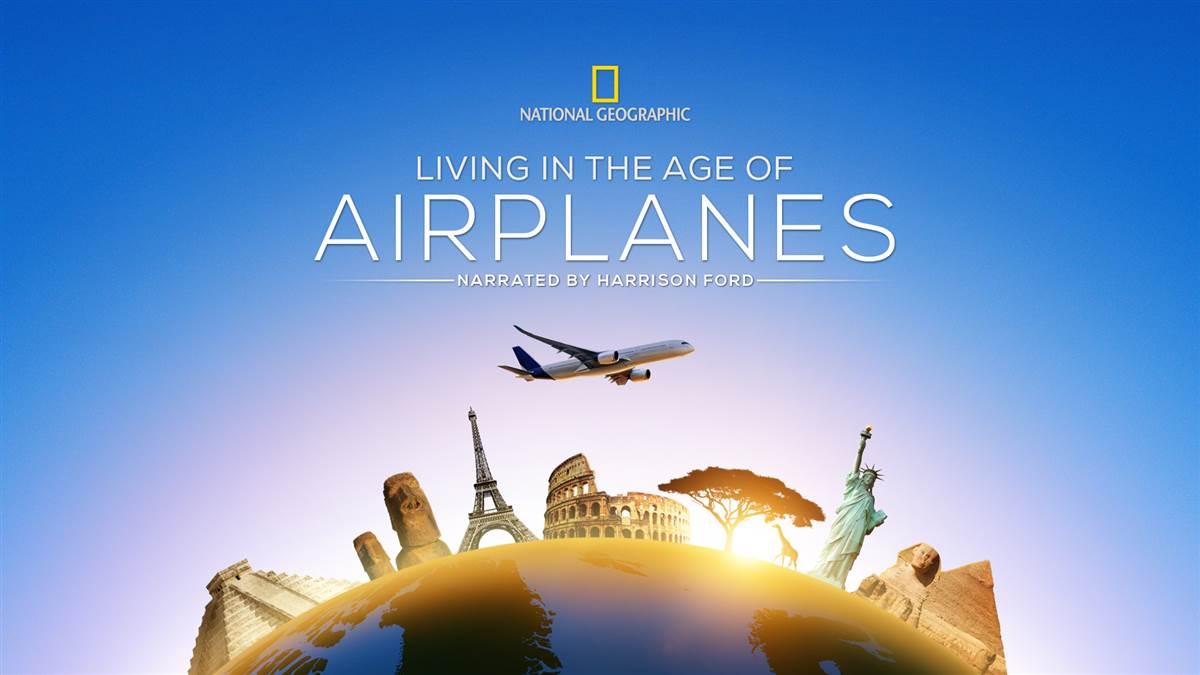 Living in the Age of Airplanes now on Amazon
Living in the Age of Airplanes now on Amazon
The movie by general aviation pilot Brian Terwilliger, Living in the Age of Airplanes—his second film celebrating aviation (One Six Right was released in 2005)—is now available from Amazon on DVD and Blu-Ray. In addition, the movie soundtrack by the late composer and GA pilot James Horner is also available on Amazon, iTunes, and Google Play. Visit the Amazon website for more details.
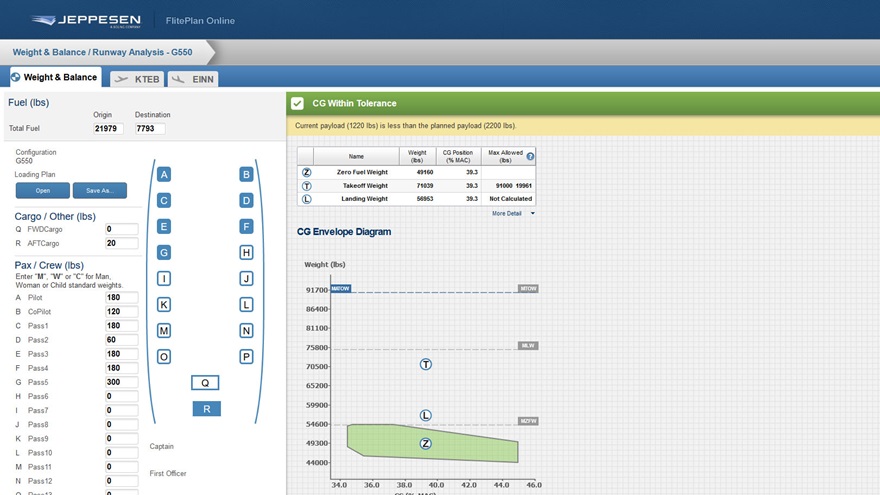 Jeppesen introduces flight department software
Jeppesen introduces flight department software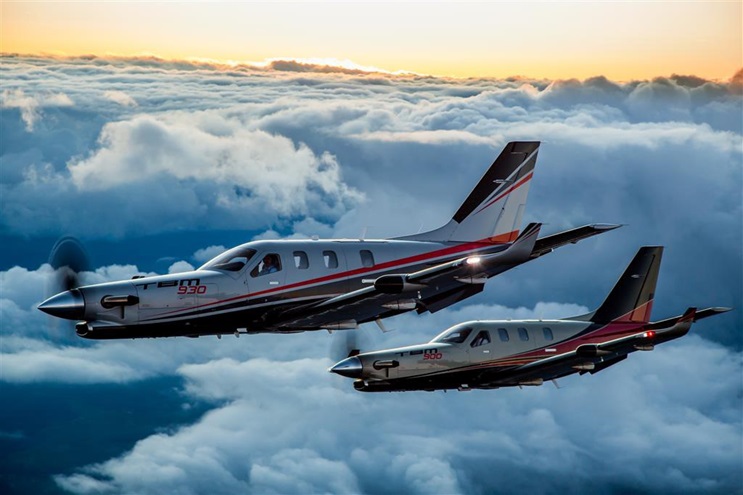 Want others to pay for your TBM?
Want others to pay for your TBM?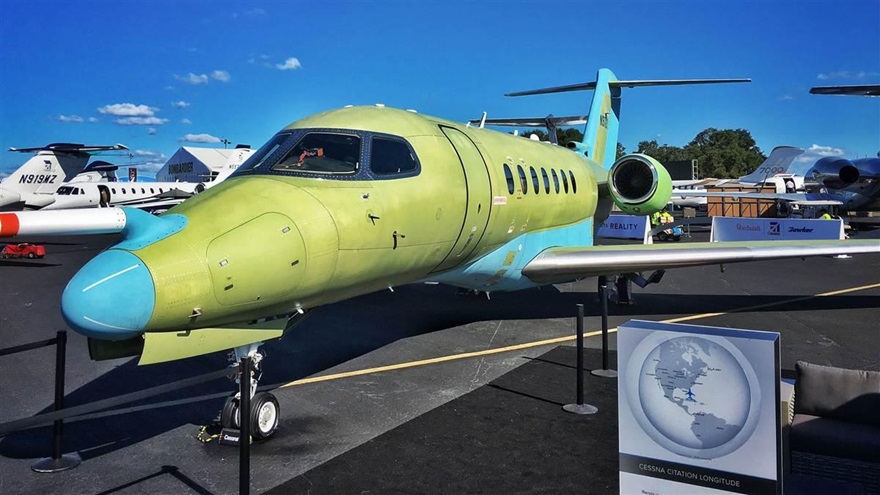 Cessna boosts Longitude performance
Cessna boosts Longitude performance